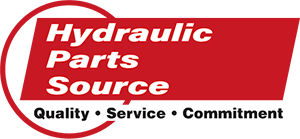How Does a Hydrostatic Pump Work?
Hydrostatic pumps are useful within a hydraulic system, as they are designed not only to move fluid through the system, but are more versatile in their ability to create continuously variable transmission of fluid.
As we have described in Hydraulic Pumps 101, hydraulic pumps are available in both variable displacement and fixed displacement options.
Variable displacement means it can vary the displacement based on load, HP, RPM, and demand, while fixed displacement means the pump can displace a constant flow depending on RPM.
Hydrostatic pumps are variable displacement pumps, which are good for a wide variety of tasks and are an efficient option.
Fixed displacement pumps, which are known as hydrodynamic pumps, work well for performing day-to-day tasks repeatedly. However, they are less efficient overall.
In this article, we focus on Hydrostatic Pumps specifically, discussing how they work, and the kinds of applications they can be used for.
What Are the Characteristics of Hydrostatic Pumps?
Hydraulic pumps are mechanical devices designed to move fluids in hydraulic systems and are classified as either hydrostatic or hydrodynamic in design.To summarize, hydraulic pumps can be:
- Hydrostatic - a positive, variable displacement of fluid based on load, HP, RPM, and demand
- Hydrodynamic - a negative, fixed displacement of fluid with constant flow
To discuss how a hydrostatic pump works, we will talk about the ways a positive displacement pumpmoves fluid mechanically through a hydraulic system.
Looking at Positive Displacement in Hydrostatic Pumps
The pumping action of a positive displacement pump is cyclic and can be driven by pistons, screws, gears, rollers, diaphragms, or vanes.
Although there are a variety of positive displacement pump designs, the majority can be classified in two categories: Reciprocating positive displacement pumps, and rotary positive displacement pumps. Learning how a hydrostatic pump works requires delving into the specific operation of each of these classifications, since the mechanical function of each is different.
Reciprocating Positive Displacement Pumps
Reciprocation, in a mechanical sense, can be defined as repeated back-and-forth movement, or strokes, of either a piston, plunger or diaphragm.This cyclic action creates pulses in the discharge with the fluid, which accelerates during compression and slows during suction. To minimize the negative effects of these pulses, pistons, plungers or diaphragms are used during compression.
Let’s look at how each can be used:
- Piston Pumps – Each piston stroke creates a vacuum, opens an inlet valve, closes the outlet valve, and draws fluid into the piston chamber. As the motion of the piston reverses, the inlet valve is closed and the outlet valve opens, allowing the fluid contained in the piston chamber to be discharged.
- Plunger Pumps – Works similar to the piston pump, but instead of constant motion, it creates a stationary seal on the pump cylinder.
- Diaphragm Pumps – Uses a flexible membrane instead of a piston or plunger to move fluid. When the diaphragm expands, the volume of the pumping chamber is increased and fluid is drawn into the pump.
Rotary Positive Displacement Pumps
Rotary positive displacement pumps use rotating cogs or gears to transfer fluids, rather than the backward-and-forward motion of reciprocating pumps.
The rotating action creates a liquid seal, which creates suction at the pump inlet. Fluid is then drawn into the pump, enclosed within rotating cogs or gears, and then transferred to the discharge.
The most basic example of a rotary positive displacement pump is a gear pump. Let’s look at the workings of two basic designs of the gear pump:
- External Gear Pumps – Rotation of gears traps fluid between teeth, moving it from the inlet to the discharge around the casing
- Internal Gear Pumps – Operates similarly, but the two interlocking gears are each different sizes, with one rotating inside the other
Let’s Review: The Specifics of the Hydrostatic Pump
Hydrostatic pumps are designed to move fluid through a hydraulic system with a continuously variable transmission of fluid using positive displacement, which makes them different from hydrodynamic pumps that have a fixed (negative) displacement.As a positive displacement pump, hydrostatic pumps work by moving fluid with the aid of seals or valves, and create a pumping action driven by pistons, screws, gears, lobes, diaphragms or vanes, depending on the pump’s design.
Remember there are two main types of positive displacement pump designs: Reciprocating and Rotary:
- Reciprocating positive displacement pumps are used to create a repeating back-and-forth movement with the use of a piston, a plunger, or a diaphragm
- Rotary positive displacement pumps use rotating vanes, lobes, or gears to transfer fluids to move fluid
In summary, hydrostatic pumps are hydraulic pumps that operate in a variety of ways to repeatedly move fluid by enclosing a fixed volume and moving it mechanically through the system.
Hydraulic Parts Source is a great resource to answer all your hydraulics questions and fulfill your hydraulic pump repair and replacement needs. Visit Hydparts.com for a full list of pumps we service, or contact us to get a quote.

